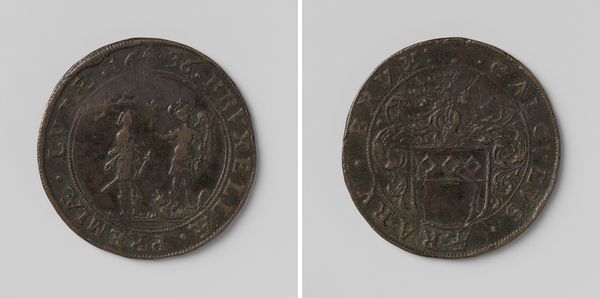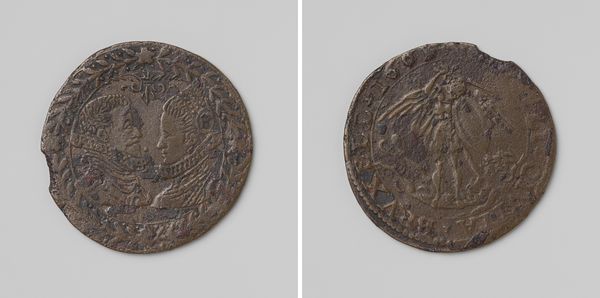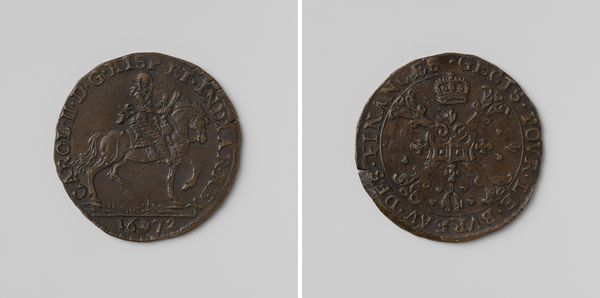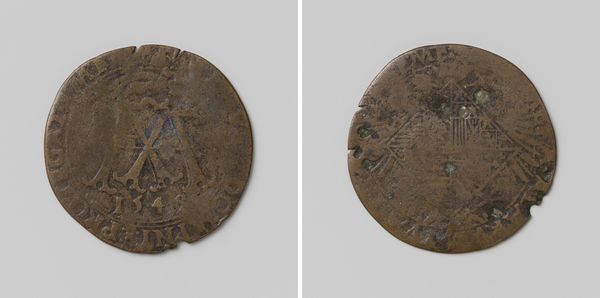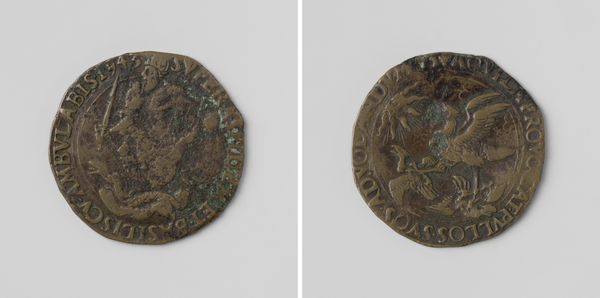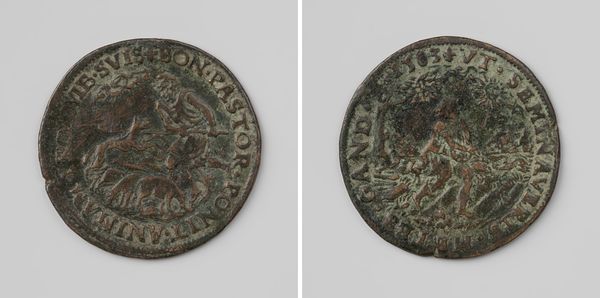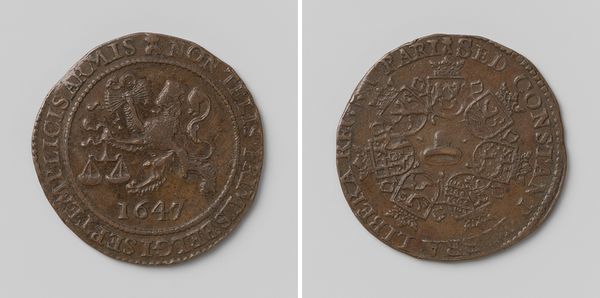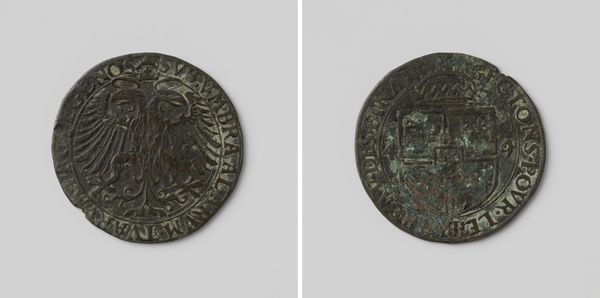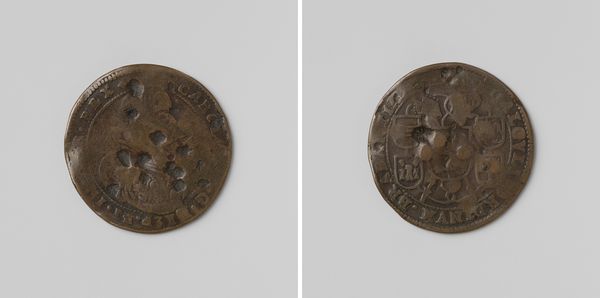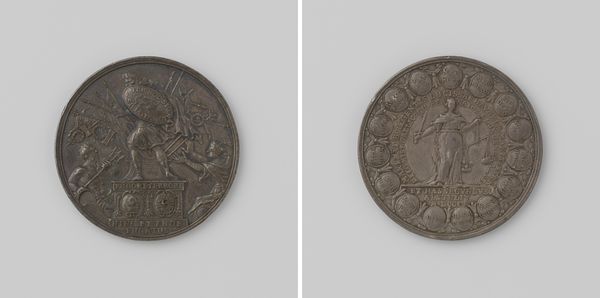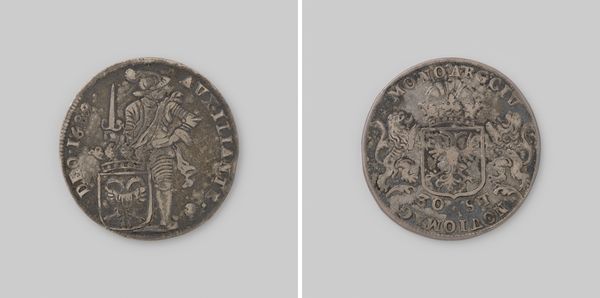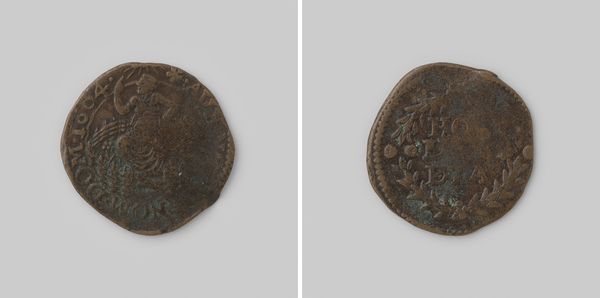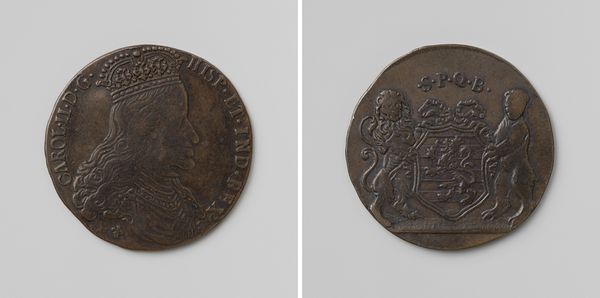
relief, bronze
#
relief
#
bronze
#
11_renaissance
#
history-painting
Dimensions: diameter 2.8 cm, weight 4.68 gr
Copyright: Rijks Museum: Open Domain
Curator: There’s something captivating about the stories told in miniature, isn’t there? Editor: Absolutely! My first impression of this bronze relief is that it's weathered—time and circumstance have definitely left their mark, a history etched right onto its surface. What is the story behind it? Curator: This is a depiction of the ‘Inname van Grave door Alessandro Farnese, hertog van Parma,’ or 'The Capture of Grave by Alessandro Farnese, Duke of Parma,' from 1586. It’s a powerful historical statement, all captured in this relatively small object currently held at the Rijksmuseum. Editor: Grave... Is there perhaps some symbolic meaning associated with graves? Does it symbolize defeat and triumph or a new era being born out of a figurative grave? Curator: Well, thinking of Grave itself, as in the city being taken... in 1586 this would have resonated with ideas about shifting powers and military prowess during the Eighty Years' War. I wonder if it references that in more ways than one? Perhaps it echoes that specific conflict’s repercussions on the public imagination? Editor: That's fascinating. I am drawn to how the bronze relief visualizes conflict and power dynamics. Its circular form echoes a coin or medallion, suggesting it might be some sort of commemoration, meant for wide distribution. The images would certainly play a role in cementing public opinion, influencing perceptions of this Duke and his achievements in the Netherlands. Curator: I find that interesting, its possible connections with currency and widespread visual messaging, and I agree on its potent imagery: it encapsulates a significant political event and then reproduces that very encapsulation on a widespread scale. Bronze itself suggests enduring legacy... and perhaps this was supposed to project Farnese's victories onto future generations. Editor: Precisely! Its circulation meant the history became permanently intertwined with popular imagination and material culture. It also poses the question of how history is told and re-told depending on specific political contexts. What a striking object! Curator: It does invite us to contemplate what the act of commemorating victory actually means, and how those meanings are always in flux depending on social, political, and historical change. A little circle that carries a huge conceptual weight.
Comments
No comments
Be the first to comment and join the conversation on the ultimate creative platform.
